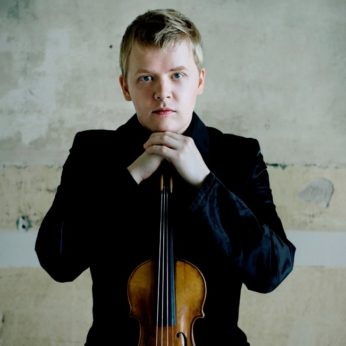Composer: Arvo Pärt (b. 1935)
Performance date: 30/06/2013
Venue: St. Brendan’s Church
Composition Year: 1977
Duration: 00:30:17
Recording Engineer: Damian Chennells, RTÉ lyric fm
Instrumentation Category:Large Mixed Ensemble
Instrumentation Other: 2vn, pf, orchestra, leader
Artists:
Irish Chamber Orchestra -
[orchestra]
Joonas Ahonen -
[piano]
Barnabás Kelemen -
[violin]
Pekka Kuusisto -
[violin]

Tabula Rasa (Latin for clean slate) was originally commissioned by Gidon Kremer as a
companion piece to Schnittke’s Concerto
Grosso No.1 with the same instrumental line-up. In the famous ECM recording
of Tabula Rasa by Gidon Kremer, the
observant music-lover will have seen that the prepared piano was indeed played
by Schnittke in a live recording from 1977. ECM did not issue the recording
until 1984 along with two versions of Fratres
and Cantus in memoriam Benjamin
Britten. It was the first ever
release of Pärt’s music in the West
and was an immediate sensation. Perhaps the time was ripe for this sort of
music. Maybe the West was hungry for spirituality in an evermore materialistic
world. Or maybe it is just very good music.
Much of Pärt’s music since 1977 is based on the
concept of tintinnabulation, from the Latin for little bells. The bell-like sound comes from two opposed voices, a
bass voice playing a single tonic triad over and over, forming a harmonic base,
while over that is played the second voice moving step-wise through the scale.
The effect is a shimmering, forever changing tonal landscape, shifting from
consonance to dissonance and back again, the two voices representing the
opposing forces of light and dark, spirit and matter.
Tabula Rasa is scored for two violins, string orchestra
and prepared piano. The latter is prepared by separating the strings with
rubber stoppers and metal screws to create a mysterious bell-like tone. The
work is in two movements, the first is called Play and gradually generates a ferocious momentum despite being
punctuated by regular, bar-long silences, while in the background the trademark
chords play out an ever-expanding melodic line that works slowly towards a shattering
climax that ends the movement. After this Silentium,
a movement that hardly moves, a
gentle, muted rocking motion, a repeated phrase at lengthening intervals from
the pianist, the two violins dancing gravely above the strings, dynamics never
above piano, the bass gradually
growing in significance, the music seemingly moving inexorably into
transcendent realms close to eternity until it slowly winds down, instruments
slipping away like in Haydn’s Farewell leaving just the bass to call time.
Copyright © 2025 West Cork Music. All rights reserved.
Designed and developed by Matrix Internet